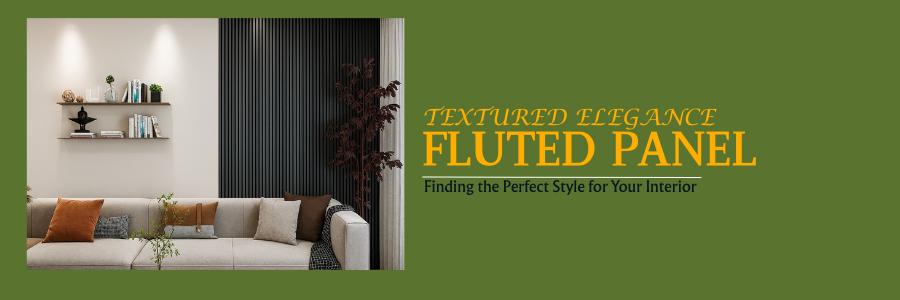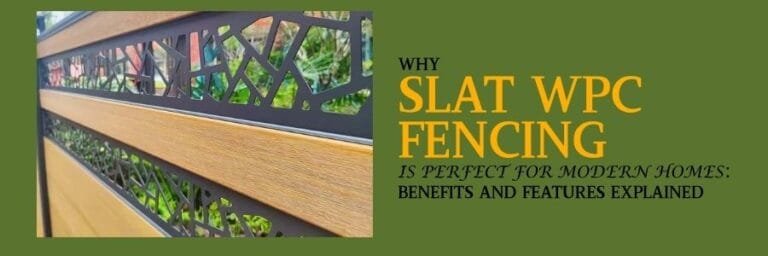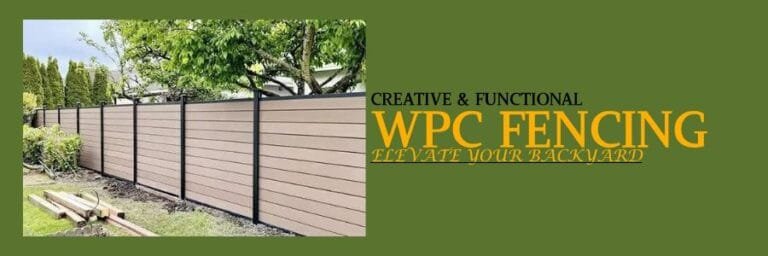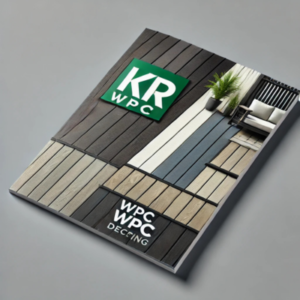Introduction: Why Fluted Wall Panels Are Gaining Attention
The elegance of having a fluted panel or columns goes back to ancient times. Columns from the Doric order of ancient Greece typically had 20 flutes, while Corinthian and Ionic columns featured 24 flutes. The modern approach to utilizing the timeless elegance of flutes is in wall panels. Initially, designers utilized wood material to produce fluted panes. However, the world rapidly switched to WPC material owing to its superior strength, style, and sustainability.
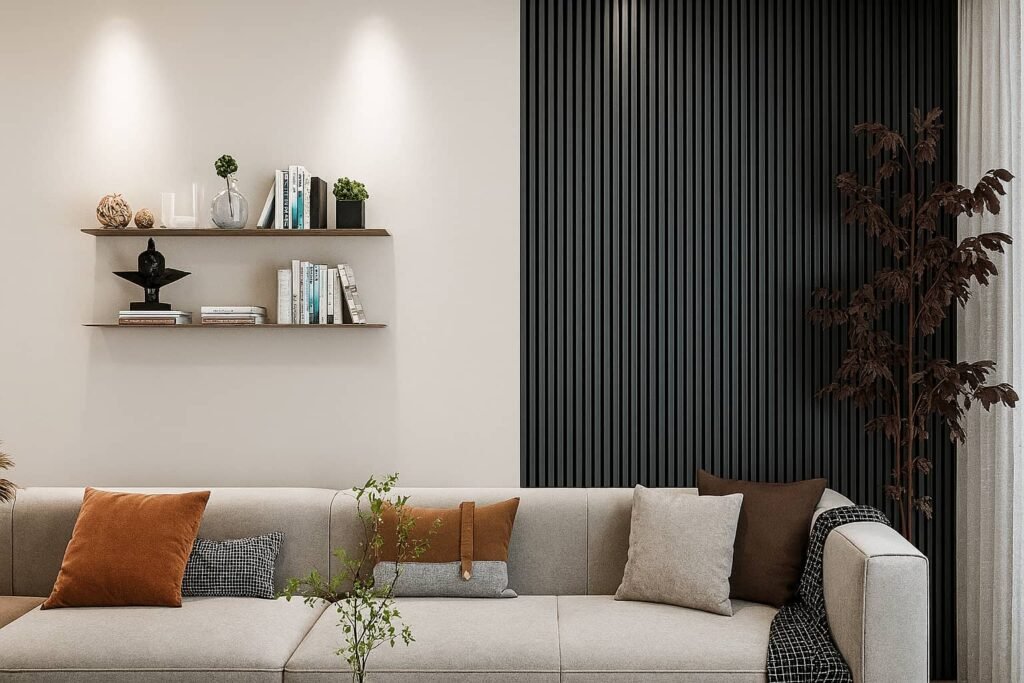
Fluted panels are everywhere, from luxury hotels to residential accents. They are a design staple of modern textured interiors. While wooden fluted panels are still widely available, WPC is gaining market share with immense speed. In comparison to wood, WPC provides higher durability, eco-friendliness, and a moisture-resistant material ideal for interior and exterior walls.
The color and cross-sectional profile of a fluted panel not only enhance your interior’s look, but also interact with light and sound to create the desired ambiance. This post will help you find the perfect fluted panel style for your interior. It will explain the key factors to consider in fluted panels, how they match with your home style, how to use them creatively in your home, and provide details on how high-end/premium brands approach the manufacturing of fluted panels. Let’s find the perfect textured elegance you need for your interior!
Key Factors to Consider When Choosing Fluted Wall Panel Designs
Picking the proper wall panel design is key. It involves being aware of all the available designs in the market. Let’s analyze all the key factors that one should consider before making a purchase:
Choice of Material
The material of the fluted panel plays a vital role in its overall performance and aesthetics. Some materials are superior in strength, while others are highly economical. Here are the four most popular materials for fluted panels:
- WPC (Wood Plastic Composite): The combination of wood fibers and thermoplastic materials results in WPC. It is the most superior type of wall panel, offering features such as strength, fire resistance, fungus resistance, and humidity resistance.
- Wood: It is the oldest material used in a fluted wall panel. The wood is carved by a skilled carpenter into the shape of a fluted panel. The wood is then painted or stained to achieve a desired finish.
- MDF (Medium-Density Fiberboard): Using a fiberboard is a cost-effective method. However, they are highly susceptible to moisture and damage due to humidity.
- PVC (Polyvinyl Chloride): The most inexpensive of all the materials is PVC. It is ideal for places where there is no direct sunlight or human interaction. The fluted wall panel can feel hollow and may even become brittle in UV light unless loaded with UV stabilizers.
Panel Texture & Groove Depth
Panels come in a variety of shapes and designs. A fluted panel has a distinct series of shallow, concave grooves or ridges, often referred to as flutes, that run along its surface. The texture and groove depth determine the panel’s outlook. Here are the panel textures available for fluted wall panels:
- Grove Depth: Users can opt for either a deep or shallow grove, depending on the preference and visual impact requirement of the space. The deep groove can be around 8-15mm (0.3 – 0.6 inches) or more in depth. In comparison, a shallow groove can be around 3-6mm (0.12 – 0.24 inches).
- Grove Spacing: The spacing between individual groves can vary, creating a unique aesthetic appeal. We will explain how spacing, shape, and depth have an impact on home style in a later section. There are tight spacing (10-25mm), medium spacing (25-50mm), and wide spacing (50mm+) options.
- Grove Shape: The shape of the groove can complement the surrounding or diminish some of its aspects, so picking the correct shape is key. There are Concave (Rounded), V-Groove, and Reeded (Ribbed) shapes for fluted panel grooves.
Color & Finish Options
The choices of colors and their finish are endless. They are material-dependent. However, all materials can provide colors and finishes of the user’s preference. Buyers can pick wood tones or go for monotonic colors. They can choose between warm and cool palettes of colors to influence the space dwellers’ mood. Even the matte or gloss finish can highlight or make the fluted panel a subtle addition to the space. Amongst all the materials, WPC provides endless color and finish under all challenging conditions.
Matching Fluted Panels to Your Home Style
The fluted panels with sharp edges and the ones with rounded profiles result in varying effects on the overall aesthetics of the space. If your space style is already defined, then consider this guide:
Minimalist and Contemporary Spaces
The modern approach to construction is minimalist and contemporary, which means that each element on the fluted panel should have sleek lines. The straight line panel with square groove is ideal for such spaces. The texture can be monochrome or offer a subtle wood-like profile that is barely visible. Clean lines, monochromatic finishes, and soft contrasts are key in minimalists and contemporary spaces.
Warm Rustic or Scandinavian Styles
Another approach is to use natural wood-look WPC material. They can bring the everlasting warm, rustic, or Scandinavian look to your space. The fluted panels made from WPC material come in natural wood color and 3D-texture that makes it indistinguishable from real wood. The WPC fluted panel can provide protection against many external factors that natural wood cannot withstand.
Bold and Artistic Interiors
For interior designers seeking to create a space where dramatic, disparate elements harmonize to form an aesthetic that is both shocking and unified. Such bold and artistic interiors can use the dark hues, dramatic grooves, and accent wall installation using WPC material, which allows diversity in shapes owing to its molding nature.
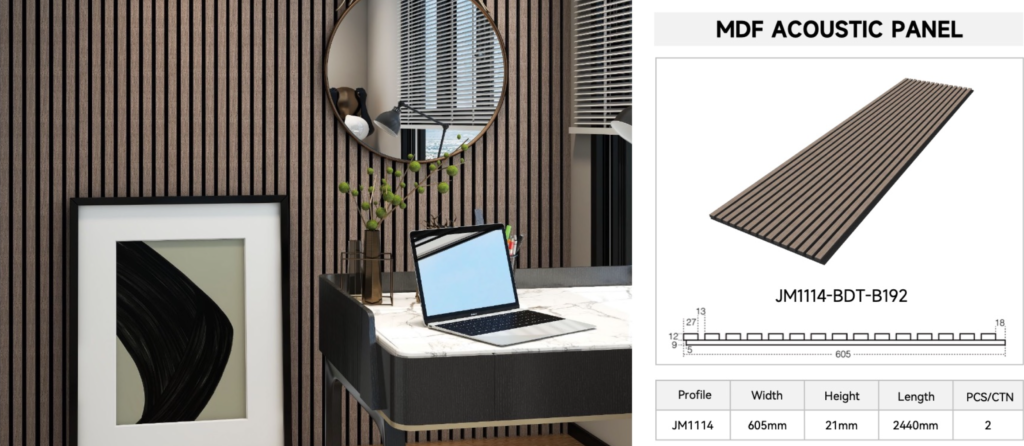
How to Use Fluted Wall Panels Creatively in Your Home
The use of fluted panels based on the interior design and the available options is covered in our guide. Now we can dive deeper into how we can combine all these factors to our advantage and make the room look more connected to the residents.
Accent Walls That Make a Statement
Using accent walls across the whole room can be an application, but the most elegant use of accent walls is the creation of a highlight. If a TV is the highlight of your entertainment room, then consider using the WPC fluted panel behind the TV on the wall. Similarly, for bedrooms, using a fluted panel behind the bed can highlight the furniture and ensure that all eyes move towards the central object the user needs to focus on.
Moreover, natural or artificial lighting plays a key role in panel appearance for living rooms, hallways, or bathrooms. Therefore, ensuring that the right fluted panel is installed inside a space is key. Typically, lighting at a right angle from the fluted wall panel creates more depth and texture for the room.
Vertical vs. Horizontal Installation
Installing the WPC fluted panel vertically or horizontally can change the perception of furniture and spaces.
- Vertical: When installed vertically, fluted panels can create an optical illusion, making a room appear taller. The simple installation trick can add an extra 2-3 feet of height perception to a space.
- Horizontal: Installing horizontally can make a narrow space look wider and more dynamic in perception.
Combining With Other Materials
The innovation in WPC fluted panels is combining different materials into a unique new aesthetic. Some wall panels come with lighting strips embedded into the fluted panel that can create a dramatic and sophisticated ambiance.
Beyond lighting, fluted wall panels can be combined with other materials such as stone, fabrics, or metals. Using stone or concrete can give an industrial feel. The use of fabrics can bring warmth to a place. Similarly, metal can make the place look modern and contemporary.
Why Choose KR WPC Fluted Wall Panels
There are tons of WPC fluted wall panel manufacturers, but KR WPC focuses on combining aesthetics with practicality. Their products are suitable for studios, hotels,
Acoustic Performance
For spaces that require vocal clarity, KR WPC specializes in panels that have built-in sound absorption properties. They can reduce echo and make interiors quieter. Large spaces like lecture halls, lobbies, sound recording studios, and conference rooms can benefit significantly from these acoustic panels.
Precision Quality & Finish
The grooves are engineered with perfection using advanced molding techniques. To ensure that the KR WPC fluted wall panels are defect-free, 8 quality inspectors use various methods to test the product and ensure precision.
Customizable Aesthetics
For projects that involve creativity and margin for diversity, KR WPC offers a wide range of standard and custom colors. Here are their details:
- Palette of Colors
- KR Press Grain: Coffee, Black, Vibrant Yellow, Oak Brown
- KR Natural Wood: Teak, Brown, Red, Coffee, Chocolate, Black, Smoke Grey, Dark Grey
- KR Shield Colors: Teak, Walnut, Redwood (and others as customized)
- Custom Colors: Pantone-matched shades available for large projects or brand needs
- Textures and Finishes
- Press Grain Finish – Embossed texture for a realistic wood feel
- Natural Wood Grain Finish – Classic timber appearance
- Grooved Surface – Adds slip-resistance and modern styling
- Smooth / Plain Finish – Clean, minimalistic look for contemporary projects
- 3D Embossed – Deep wood pattern for enhanced realism
- Co-extrusion Shield Surface – Extra protective outer layer with richer color depth
Durability & Long-Term Value
The combination of wood flour and thermoplastic material creates WPC. KR WPC adds premium additives to the mix, enhancing the life of its product. They are highly resilient to the sun’s UV rays, fading, and moisture. The materials can have 20+ years of service life.
Eco-Friendly Commitment
KR WPC uses 100% recycled or reclaimed wood and plastic to produce the fluted panels. These reduce environmental waste and support green building goals. Therefore, contributes to sustainable interior and exterior projects.
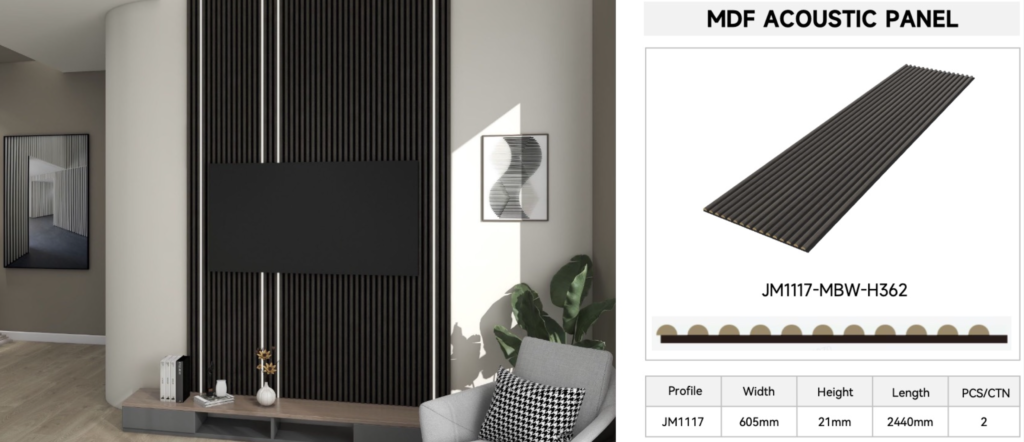
Conclusion
If you are looking for a perfect fluted panel style for your interior, then consider the following key points that will act as a guide:
- Pick WPC for strength, moisture resistance, and eco-friendliness.
- Choose groove depth – deep for bold, shallow for subtle.
- Match spacing – tight for modern, wide for a relaxed look.
- Select shape – concave, V-groove, or ribbed.
- Go with textures – press grain, wood grain, smooth, 3D embossed.
- Pick colors – KR Press Grain, Natural Wood, Shield, or custom Pantone.
- Finish style – matte for soft elegance, gloss for high impact.
- Align with interior style – minimalist, rustic, or bold artistic.
- Install smart – vertical for height, horizontal for width.
- Choose KR WPC – acoustic performance, precision quality, 20+ years of life.
FAQ
1. Are WPC fluted panels better than wood or MDF options?
Yes, WPC fluted panels have features that protect them against fading, warping, humidity, and UV rays. Wood and MDF may lose their shape or crack due to the ingress of water in a humid environment. They also need regular painting and scaling, whereas WPC exhibits the same color throughout its cross-section.
2. Can I install fluted panels in humid areas like bathrooms?
It is not recommended to use fluted panels in humid areas like the bathroom unless they are made from a material that is highly moisture-resistant. The constant presence of moisture can ingress into the structure and interact with wood in materials like wood or MDF (Medium-Density Fiberboard) to cause swelling, warping, and cracking, which destroys its aesthetic appeal and structural integrity.
3. Do fluted wall panels require painting or sealing?
If the fluted wall panel is made from WPC (Wood Plastic Composite), then you do not need to paint or seal. In fact, it can affect the performance of WPC. In comparison, wood requires regular painting and sealing to protect it from moisture and other external factors, making it high-maintenance.
4. How do fluted panels change the acoustics of a room?
The use of fluted panels in rooms can reduce echo by absorbing some of the sound in between the grooves. Moreover, foam-backed fluted panels, especially WPC (wood plastic composite) fluted panels, can significantly improve room acoustics and are highly recommended for areas like lecture halls, lobbies, sound recording studios, and conference rooms.
5. What’s the best lighting setup for fluted wall panels?
The best lighting setup depends on the interior designer’s choice. Use side lighting to enhance the grooves, top-down wash lighting to soften the shadows, and integrated LED strips in grooves to create the modern feel. Combine them with warm or cool temperature options for a lighting setup.

